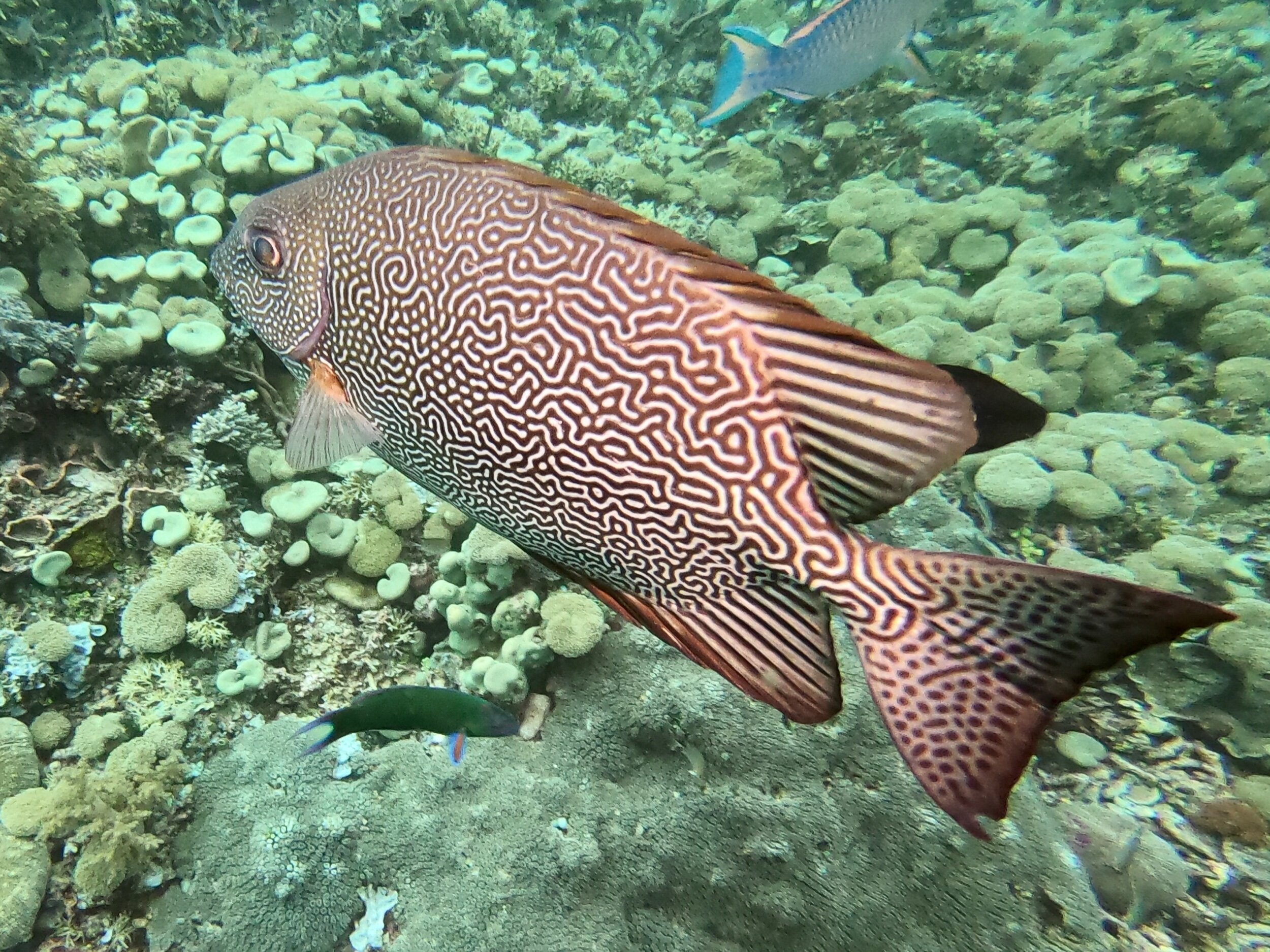Raja Ampat (Day 173)
We loved sailing and diving in Raja Ampat — a vast protected underwater park in eastern Indonesia. Even on a trip of a lifetime, this was a trip of a lifetime!
Like most people, we had never heard of Raja Ampat before we planned the trip. But we were drawn to the idea of going places that were off the beaten path. (In this case, way way off…)
Raja Ampat encompasses 1,500 islands (mostly unpopulated) in an area about 1.5x the size of Massachusetts. There are about 43,000 total inhabitants – they would not come close to filling Gillette Stadium for a football game.
Without many people, nature reins supreme!
Raja Ampat is at the center of the Coral Triangle, where the Indian and Pacific oceans meet. Scientists say this creates an ecosystem that is 10x as biodiverse as the Great Barrier Reef.
Raja Ampat gets almost no tourists: just 5,000 per year, about what the Museum of Fine Arts Boston gets in 2 days. There are very few flights and not many hotel rooms.
Surprisingly, it was the first time we had a bunch of friends travel to see us on the trip. It took them about 46 hours door to door - a real commitment. We were so excited they could come!
We arrived and got on board a Phinisi, a traditional Indonesian wooden sailing ship built by hand from local teak and ironwood. It was purpose built as a Liveaboard (a boat for scuba diving, with specialized equipment for refilling air tanks, etc.), and it sailed from one remote dive spot to the next.
We were already scuba certified, and our friends did their final certification dives off the boat. It was so fun to explore this world together! We often did multiple dives per day, and we did a number of specialized dives – drift dives, wall dives, and even a night dive.
Raja Ampat is near the equator, and we crossed it twice on board. It has some of the warmest ocean water on earth, at around 89 degrees year round. That put everyone in a good mood!
****
SO MANY FISH !
Raja Ampat has over 1,500 types of fish, more than anywhere else in the world. New species are discovered all the time.
Here is a particularly crazy looking one: the crocodilefish. A bottom dweller with amazing camouflage, it patiently waits to ambush its prey.
Can you see it?? Here is another shot.
Sometimes, we would swim into a huge school of one type of fish. You can see how swimming in a big group like this is a good defense strategy against predators. It is hard to focus on just one fish!
Blue and Yellow Fusiliers.
Other times, you would be surrounded by a blizzard of fish of different sizes, shapes and colors.
The sea animals would allow you to get surprisingly close to them. (Many underwater cameras make things look much father away than they really are.) You would never get this close to birds, for example, in the wild.
Here is a turtle that swam next to us.
And here is a manta that came over to check us out. It does a sort of flip over our heads!
Butterflyfish. Blue sea star. And Rabbitfish (see the cool “maze” pattern.)
Barramundi. Barracuda. Parrotfish.
The Dog-Faced Puffer fish (also called Blackspotted Puffer). Its big dark eyes make it look cute, but watch out: this puffer is filled with a poison that is 1,200x more deadly than cyanide! One pufferfish has enough poison to kill 30 people. And there is no antidote.
(By the way, this picture is of it basically “unpuffed.” It blows up completely round like a beach ball when it is fully puffed.)
*****
HISTORY
Indonesia is the largest archipelago on the planet with 17,500 islands, 255 million people, and 700 languages. Indonesia is so spread out that flying from one end of the country to the other is as far as flying from London to Baghdad!
The name Raja Ampat means “Four Kings.” Many say the name dates back to the 17th century, when four kings ruled the area on behalf of the Sultan. The islands around here were important in the Spice Trade. Spices like nutmeg used to be worth more than gold in European markets! You could make 1000%+ on your money by buying spices cheaply in Indonesia and selling them at high prices in Europe.
The first corporation in the world, the Dutch East India Company, was set up to import spices to Europe (among other things), and its shareholders became rich in the process.
The British wanted in on this great business of Spice Trading, and they went to war with the Dutch over rights to these trade routes. The war lasted for decades. After military losses, the English surrendered a very profitable nearby Spice Island called Run to the Dutch. In return, they got a sort of consolation prize: a North American Dutch island that was mostly unprofitable— Manhattan. Little did either side know, but the Brits made one of the greatest trades in history! Nutmeg priced have since fallen about 99.99% relative to gold, and the economy of the Spice Islands has been in tatters for centuries.
Without Spice Trade riches, these sparsely populated islands fell off the world’s radar screen for 100’s of years. The region was pretty dangerous, with headhunting and cannibalism not too far away from where we were – and well after 1950!
But then a scuba diver/ adventurer named Max Ammer came searching for sunken treasure in the 1990s. He didn’t find riches, but he did find an amazing undersea world untouched by hordes of tourists. He started a small eco resort. Over time, the world united to protect this special spot, banning some really destructive practices like dynamite fishing and cyanide fishing (!). Now, Raja Ampat has quietly been reborn as an Eco-tourism destination.
*****
Off we go into the deep…

























